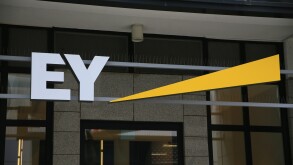Overall, 2017 saw significant changes in Chinese tax rules and in the broader regulatory environment. Many of the changes reflected the reorientation of government policy towards an evolving cross-border investment landscape. The digitisation of the economy, as well as the tax administration, was also a key driver of developments.
The government launched a range of initiatives aimed at reinvigorating foreign investment into China, which had levelled off in recent years. The State Council's January 2017 Circular No. 5 and August 2017 Circular No. 39 played a key role in this regard:
The circulars set out plans to loosen the requirements for foreign investors to have Chinese co-investors, where entering previously restricted areas of the auto, financial services, transport and telecoms sectors. The detailed rules for the financial services sector quickly emerged in the autumn, with the remaining details due in the first half of 2018.
This followed on from steps the government had already taken earlier in 2017 to ease red tape for foreign investors. A national 'negative list' approach was rolled out under which most foreign greenfield and M&A investment just needs to be registered with the authorities. Previous pre-approval requirements were scrapped, and retained solely for a limited number of restricted sectors. These were, in any case, reduced in the June 2017 revised catalogue of industries for guiding foreign investment.
The July 2017 launch of the bond connect scheme gave foreign investors access to China's $10 trillion interbank bond market via Hong Kong. This complements the existing Stock Connect schemes, which received continued government support with the renewal of their special tax treatment in November 2017.
Circular 39 also set out a new tax incentive to support inbound investment. This defers withholding tax (WHT) on dividends where they are reinvested in China by their foreign recipients – details are due by end of 2017. In parallel, the October SAT Announcement No. 37 clarified WHT administration, lessening exposures for foreign sellers of Chinese assets.
These measures were accompanied, throughout the year, by enhanced R&D tax treatment for SMEs, VC and angel investor tax incentives for tech sector investment, and reduced VAT and local fee burdens. At the same time, tax enforcement was enhanced with new transfer pricing rules in March 2017, and guidance on international exchange of tax information in May 2017. This was accompanied by China's July 2017 adherence to a global multilateral instrument, which is set to update 48 (and rising) China tax treaties for new anti-abuse rules. The first half of 2018 is set to accompany this with new permanent establishment and treaty abuse guidance, and potentially guidance on controlled foreign company and anti-hybrid rules.
On the outbound investment front, the government took measures to both rein in speculative ventures, and channel/assist favoured investments. A series of measures taken by the foreign exchange and banking regulators, as well as the Ministry of Commerce, the state-owned enterprise oversight body, and the National Planning Agency (NDRC), in late 2016 and early 2017, saw levels of outbound investment make a sharp downward correction. By November 2017 it was estimated that outbound investment for the year would be down 40% on 2016. August 2017 government guidance clarified the new approach, disallowing investments in foreign sports clubs and entertainment assets, but designating Belt and Road Initiative (BRI) infrastructure investments as formally 'encouraged'. BRI investment rose over the year. Circular No. 39 indicated that Chinese tax rules for outbound investment would be revamped, to either enhance foreign tax credits or exempt dividends from overseas from tax – details are expected in in the first half of 2018.
As ever, Chinese tax and regulatory policy is a mixture of 'give and take', and new regulations will continue to be issued at a fast clip as we enter 2018.

|

|
Khoonming Ho (khoonming.ho@kpmg.com) and Lewis Lu (lewis.lu@kpmg.com)
KPMG China
Tel: +86 (10) 8508 7082 and +86 (21) 2212 3421
Website: www.kpmg.com/cn










